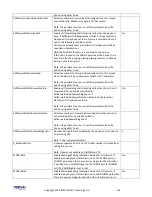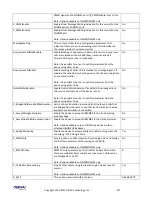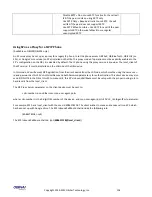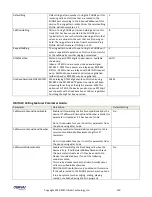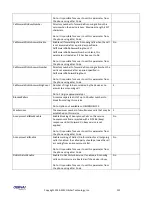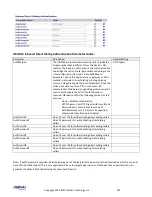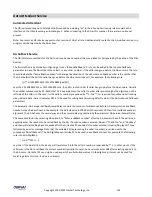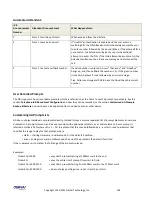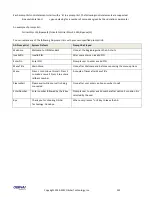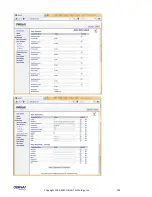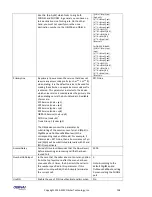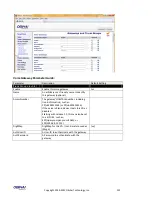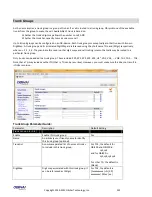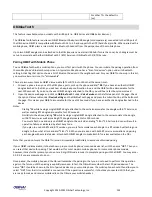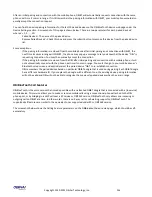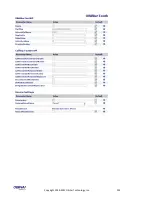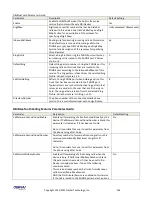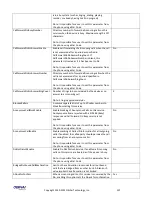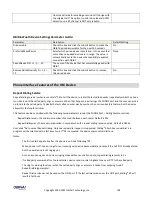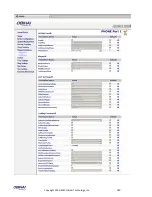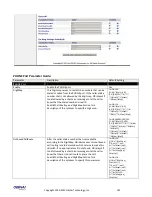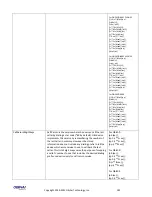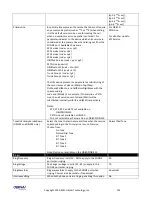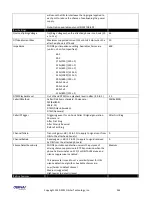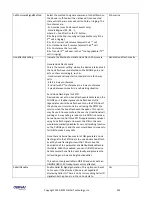
Copyright 2010-2013 Obihai Technology, Inc.
130
Voice Gateways
A gateway in this context is another OBi device which lets incoming OBiTALK callers to call further on one or more of its
trunks (such as SP1, SP2, or LI). The caller can call the gateway first with a normal OBiTALK call, get the AA, and then dial the
target number. For authentication the AA may ask the user to enter a PIN before establishing the second call. This way of
dialing is known as 2-stage dialing.
On the other hand, a gateway can be configured on the originating OBi device such that the caller can dial the target
number directly without going through the AA. We refer to this method of dialing as direct dialing or 1-stage dialing. Since it
is not possible to enter a PIN in the case of direct dialing, a userid/password pair can be configured for the gateway also so
that the device can authenticate with the gateway automatically using HTTP digest method. HTTP digest authentication is
optional. You do not need to provide user/password if the gateway does not require authentication for direct dialing.
OBi allows the user to specify up to 8 gateways. Each gateway is addressed using its factory-assigned OBi Number. A
gateway is conceptually a trunk with its own DigitMap. You can refer to a gateway and its associated DigitMap with the
short trunk name VG
n
and (Mvg
n
) respectively, for
n
= 1, 2, 3, …, 8. VG
n
and (Mvg
n
) can be used in call routing rules and
digit maps just like other real trunks.
As an example, you can add the rule {(1xxx xxx xxxx):vg2} in PHONE port’s OutboundCallRoute to let the device dials out
using VGs when caller dials any 11-digit number starting with 1. On the gateway side, you can add the corresponding rule
{>(1 xxx xxx xxxx):sp1} in the OBiTALK Service::InboundCallRoute to make the call on its SP1 trunk. You can change the last
rule to {(290 333 100|200 444 101)>(1 xxx xxx xxxx):sp1} if you want to limit the gateway to allow just the two stated caller
numbers to make such calls.
Starting with firmware release 1.2, a gateway may also be configured with a SIP URL as the access number to be accessed
by the device over one of the SP trunks. For example, one can set the gateway access number as SP1(some-sip-
server.mydomain.com), or SP2(192.168.15.111:5062), etc. Note that when using a SP trunk to access a (SIP) gateway, the
device will:
-
Not use the outbound proxy, ICE, or STUN regardless the settings on the SP trunk.
-
Use only the device’s local address as the SIP Contact, and ignore any NATed address discovered by the device.
-
Use the gateway’s SIP URL to form the FROM header of the outbound INVITE.
-
Use the gateway’s AuthUserID and AuthPassword for authentication.
-
Apply the symmetric RTP concept.
Summary of Contents for OBi100
Page 54: ...Copyright 2010 2013 Obihai Technology Inc 54...
Page 55: ...Copyright 2010 2013 Obihai Technology Inc 55...
Page 58: ...Copyright 2010 2013 Obihai Technology Inc 58...
Page 75: ...Copyright 2010 2013 Obihai Technology Inc 75...
Page 100: ...Copyright 2010 2013 Obihai Technology Inc 100...
Page 109: ...Copyright 2010 2013 Obihai Technology Inc 109 SP1 SP2 SP3 and SP4 Services...
Page 126: ...Copyright 2010 2013 Obihai Technology Inc 126...
Page 135: ...Copyright 2010 2013 Obihai Technology Inc 135...
Page 140: ...Copyright 2010 2013 Obihai Technology Inc 140...
Page 157: ...Copyright 2010 2013 Obihai Technology Inc 157...
Page 158: ...Copyright 2010 2013 Obihai Technology Inc 158...
Page 159: ...Copyright 2010 2013 Obihai Technology Inc 159...
Page 174: ...Copyright 2010 2013 Obihai Technology Inc 174...
Page 185: ...Copyright 2010 2013 Obihai Technology Inc 185...

